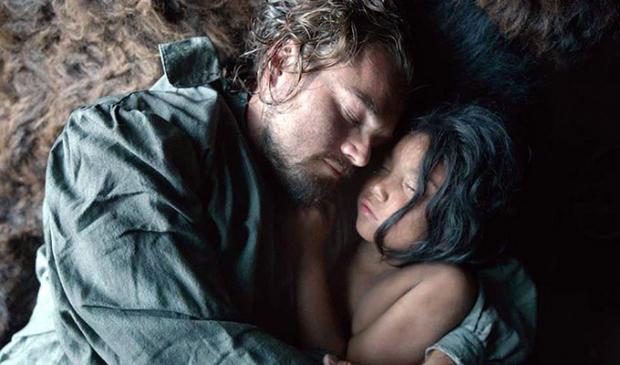Leo and the Bear: The Revenant
It’s never a good sign when a movie starts with the words “I know you want this to be over.” Especially when it’s a movie that comes to you encased in a skin of pre-release publicity and chatter that generally proclaims, “We dare you to watch this movie.”
If you’ve heard nothing else about The Revenant, you’ve probably heard about the Bear. The Bear was the reason I wasn’t particularly looking forward to seeing the new film by Alejandro González Iñárritu, his first since the Oscar-winning Birdman. (Another reason: At 156 minutes, it’s only a few minutes shorter than Quentin Tarantino’s The Hateful Eight, another Western with which it has much in common, most of which can be boiled down to “Don’t take Grandma to see it.”)
In retrospect, I’m abashed to admit that the version I had heard was that the movie shows Leonardo DiCaprio getting raped by a bear. He isn’t. (It’s a female bear.) Still, that’s about the only horrible thing the bear doesn’t do to him in a lengthy sequence of mauling, clawing, and tossing around, all unmarked by any visible edits.
How was it done? I suppose if I looked around enough on the internet I might find out, but I hate taking the mystery out of movies that way. But it’s astonishingly realistic. So is a scene of wolves separating a bison from its herd and slaughtering it. So is a scene of a dead horse being disemboweled.
But there’s a limit to the value of this kind of thing. You start paying more attention to wondering how it was done than to the story. Especially when the story is as haphazard as it is here.
The Revenant (a medieval term for a revived dead man) is based on the true story of frontiersman Hugh Glass, who in 1823 was abandoned by his comrades after he was attacked by a grizzly bear. Despite being left with no shelter or supplies, he survived to hunt them down.
This certainly seems like sufficient material for an adventure movie—it was when it was filmed in 1971 as Man in the Wilderness, with Richard Harris. Yet despite what some might see as the excessive attention to the details of Glass’s struggle, the long-in-development script (the final version is credited to Iñárritu and Mark L. Smith) piles on subplots involving French trappers, an Arikara tribe searching for their chief’s kidnapped daughter, and other characters who are dispatched with a heedless indifference that you seldom see outside of Game of Thrones.
It’s all quite gorgeous to look at, for the beauty of the natural landscapes, cinematographer Emmanuel Lubezki’s skill in framing them, and Iñárritu’s ability to make it all look so seamless. (Though he can hardly top Birdman in that respect, you can’t help but marvel at many of the shots he and Lubezki accomplish.)
But it’s not much more than good-looking, certainly not enough to make it worth the endurance test that it is. As Glass’s primary betrayer, Tom Hardy speaks most of his dialogue in a mumbled growl that might be authentic, but I’ll trade authenticity for comprehensibility any day.
The bear scene made me think of Grizzly Man, Werner Herzog’s unforgettable documentary about a reckless California dude who moves to Alaska to live with bears, one of whom attacked and ate him. The Revenant is awash with Herzog’s perception of the natural world’s indifference (at best) to man. If only they could have got him to direct this.
PS: Much has been made of DiCaprio’s dedication to the realism of this film and the difficulties he withstood during nine months of shooting it. To that, I point to the end credits for his on-set personal hairstylist and chef. Life is never that hard for a movie star.

